![]()
“The Burnley Sensation” as it was now becoming known had caused a great stir not only in Burnley but also that of Manchester and not even the hustle and bustle of daily life could conceal the fact that something of unusual importance was about to take place, and on Friday the 6th October 1893, Minshull Police Court in Manchester would be the setting of what was quickly escalating into the crime of the decade.
Below, you can listen to the first part of this two part story.
The public’s appetite for curiosity had been whetted by recent ‘rumours’ that sensational new evidence had been found that would incriminate both Ashworth Read and Elizabeth Remington for the willful murder of a child and as people made their way to the court house, the only topic of conversation on their lips was, where they innocent or guilty of murder?
Minshull Street Police Station was already packed with groups of people all eager to hear the lurid details of the case hours before the trial started and as soon as the doors were opened, the spacious corridors and staircases leading to the Court were quickly filled and the limited allocation of seats provided for the public gallery would soon be occupied. As the morning advanced, more and more people all made their way to the court house. This was a case that no-one wanted to miss!
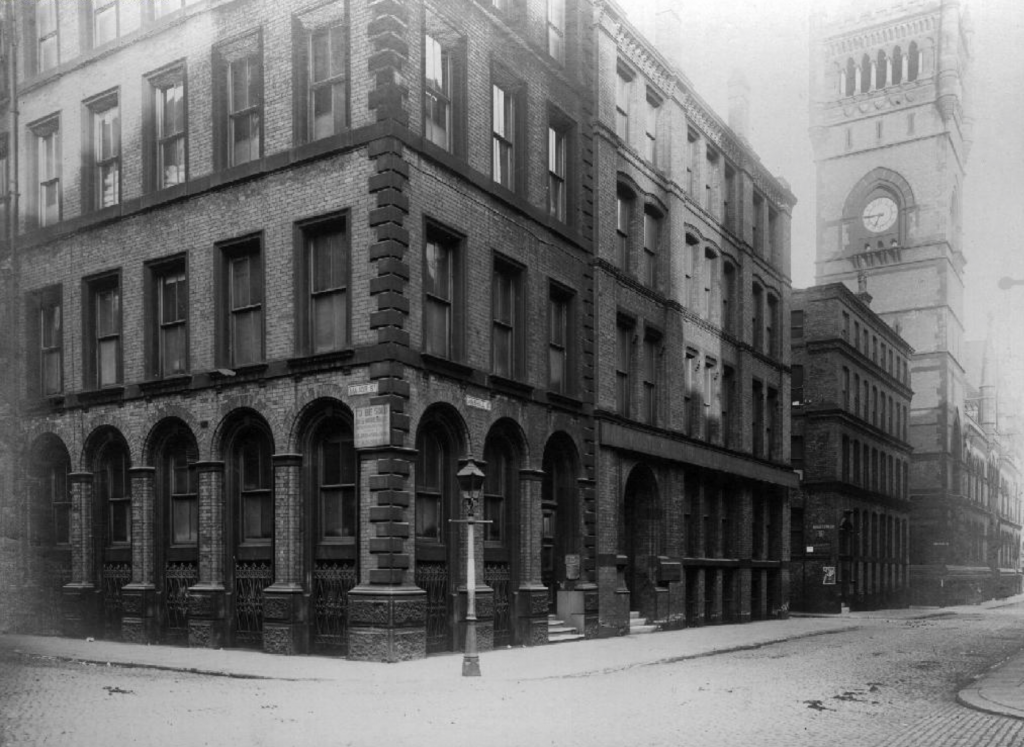
Minshull Street 
Inside a Greater Manchester Police Station. This police station, is located on Manchester’s Newton Street.
Taking to their seats, members of the press where first into the court but seats at a premium, those unlucky enough to arrive late argued with officials, with pushing and shoving taking hold as tempers flared.
Next, the police officials involved in the case would make their appearance. Chief Detective Inspector Caminada flitted in and out of the room, seemingly making sure all of his members of staff where ready. Showing an air of authority, he was described by one journalist as being a pleasant looking dark haired, bearded man with an open face and intellectual expression.
With everyone now in place, the only people next to attend the session where those of Ashworth Read and Elizabeth Remington.
However, Mr. William Cobbett, prosecuting on behalf of the police would attend and would ask the judge that the case against Read and Remington may be called in order that he might make an application for a remand. At this point, the members of press looked around, stunned at what they were hearing. Nothing was known to any of them and the request for a remand seemed to literally come out of nowhere.
A hush came over the gallery as the name ‘Read’ was made out. A few seconds later and the footsteps of newcomers into the court could be heard making their way into the dock.
Standing with their heads bent down, Read and Remington appeared to the wide eyed open spectators all yearning for the details of their crime to be heard in detail for the first time.
Elizabeth was a well-built, tall looking young woman and it was clearly obvious to all that she had been crying for some considerable time. Each time she wiped away the tears from her face, more appeared just as quickly. Her face was slightly obscured by a hat trimmed with velvet, relieved by a small feather and the upper portion of her body was covered in a grey looking shawl that covered her neck and jaw line.
Stood next to her was Ashworth Read, dressed in a smart looking brown suit that gave the impression of a successful business man and an aura of authority. His thin, shallow face was partially covered with a long beard and it seemed that recent events had given him a haggard appearance.
Approaching the bench, William Cobbett said; “I appear in this case to prosecute. The prisoners are charged with the murder of the child of the female prisoner. They were brought to you a week ago to-day and remanded in custody.”
He would then go on to say to the judge, Mr. Headlam, “They were brought before the bench and remanded in custody. I apply to-day for a further remand for a week, on the ground that the case is not yet complete. Important enquiries are now on foot which may result in the discovery of a material character, and is not desirable at the present time that I should state the case more fully that Chief Detective Inspector Caminada stated it a week ago.”
Based on this request, Read and Remington would be remanded until Thursday, 11th October and the case would resume at around 11.30am.
The court quickly emptied to the disappointment of all those that had attended. The cases that were next to be heard were seemingly less important to the public to that of Read and Remington.
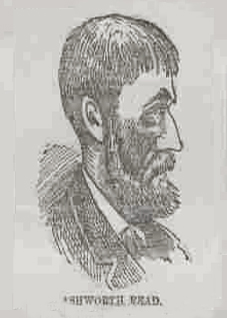
Ashworth Read 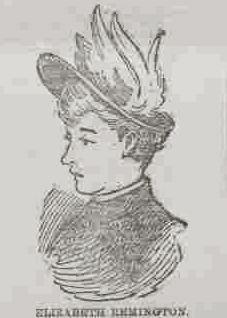
Elizabeth Remington
A week later and just as previously, the Minshull Police Court was packed to the rafters by the time Read and Remington made their way into the dock on the 11th of October 1893.
No fewer than eighteen witnesses would be called as the full story of what had transpired on the afternoon of 6th August 1893 and to the discovery of the body of a baby being found by the Shorrock brothers was read out.
William Cobbett, prosecuting would detail the case that we have already talked about in the first episode of this two part story. He would tell the jury the story of how Elizabeth had given birth to a baby boy, whose father, it was claimed was Ashworth Reads and that they had taken the baby to a river in Blackley where they then murdered the child before disposing the body beneath some bushes.
He would go into detail as to how the couple had originally met and how Elizabeth had left the Read’s employment before moving to Manchester where she resided until she had given birth. He would tell the jury of the meetings between the pair at Angel Meadow and how they had planned the murder of their then unborn child.
Chief Detective Inspector Caminada would be the first witness to enter the dock. He spoke of how he arrested Elizabeth Remington where she was engaged as a domestic cleaner at a house in Burnley. He would also mention her signed statement, which he produced as evidence and handed over to the Judge, Mr. Headlam, as well as the ring Elizabeth had given to Caminada whilst at the Manchester Town Hall where she was taken too.
Caminada would, after speaking of the arrest of Read, produce the letters signed by Barnsley, fiancé of Elizabeth Remington, but William Cobbett, prosecuting, would say to the jury it was unnecessary to read through them all but Mr. Headlem, Judge, would have access to them all the same.
Frances Remington would be next to take to the stand and again, she would go into great detail as to the events leading up to and after Elizabeth left for Manchester prior to giving birth to her son.
Victor Saul, surgeon and who had helped Elizabeth on her arrival at the Temperance Hotel on New Bridge Street as well as Mary King, landlady of the Temperance Hotel would be next to give evidence.
One of the most important witnesses, however, was that of John Stone, a detective officer who was in the employment of the Lancashire and Yorkshire Railway Company, who said he knew both the prisoners and had seen them together at Victoria Station at least half a dozen times. He remembered three times in particular – once being in the subway and on another occasion near the refreshment room on No. 6 platform. It was at mid-day on each occasion, and the first time he noticed them as around the end of June.
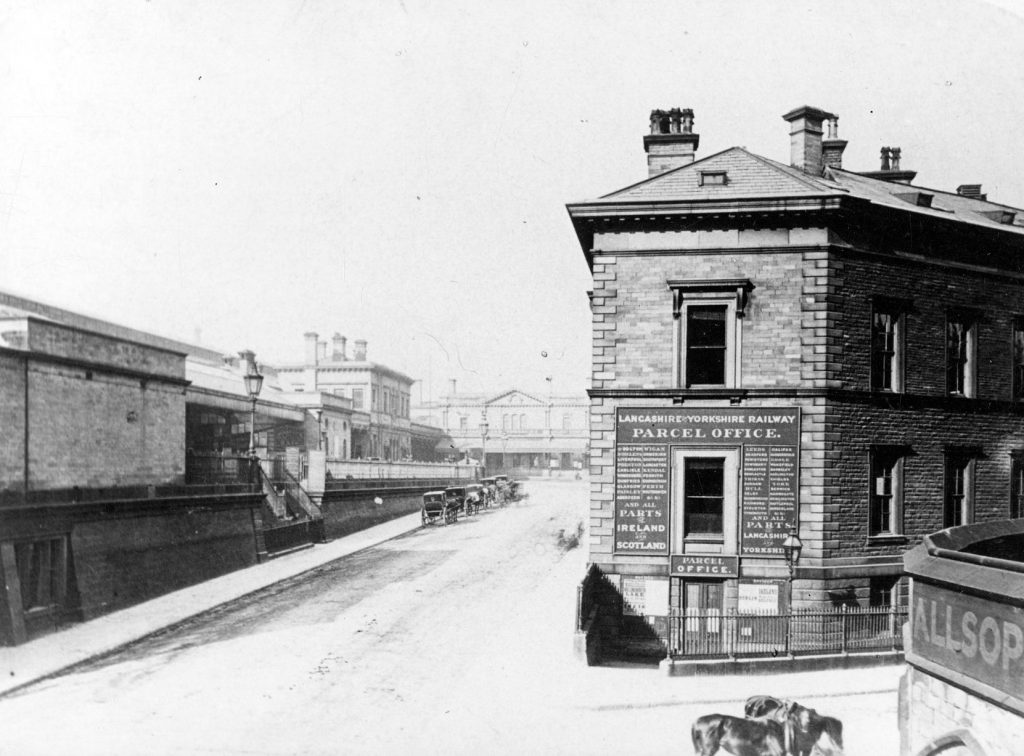
1866 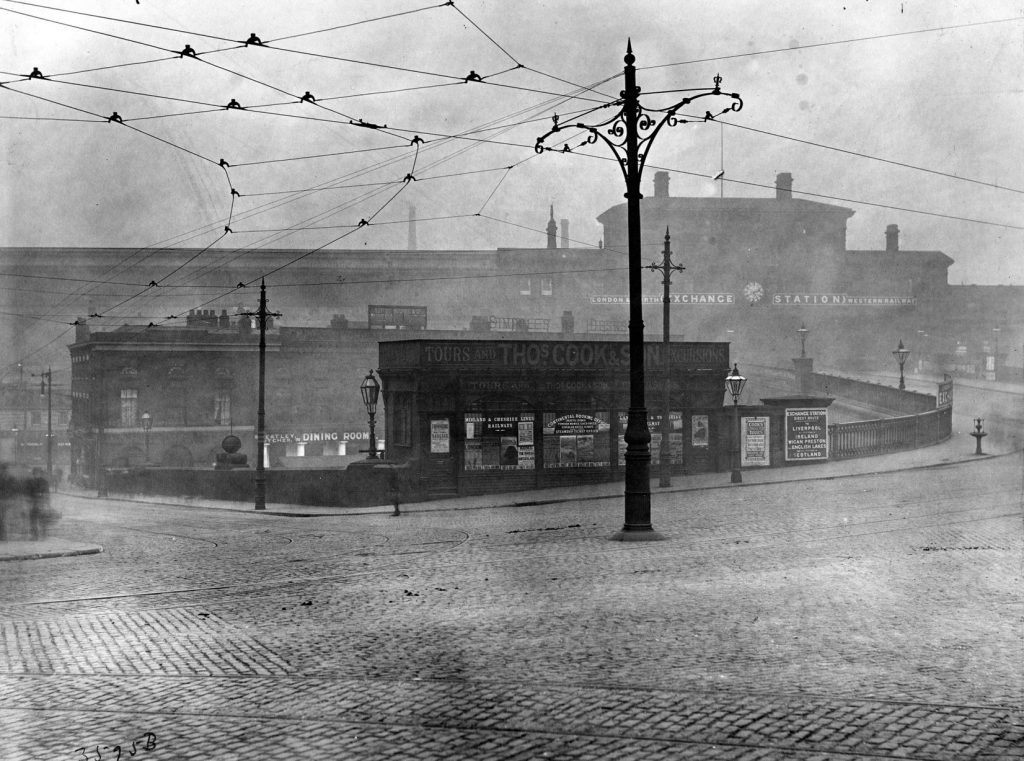
1903 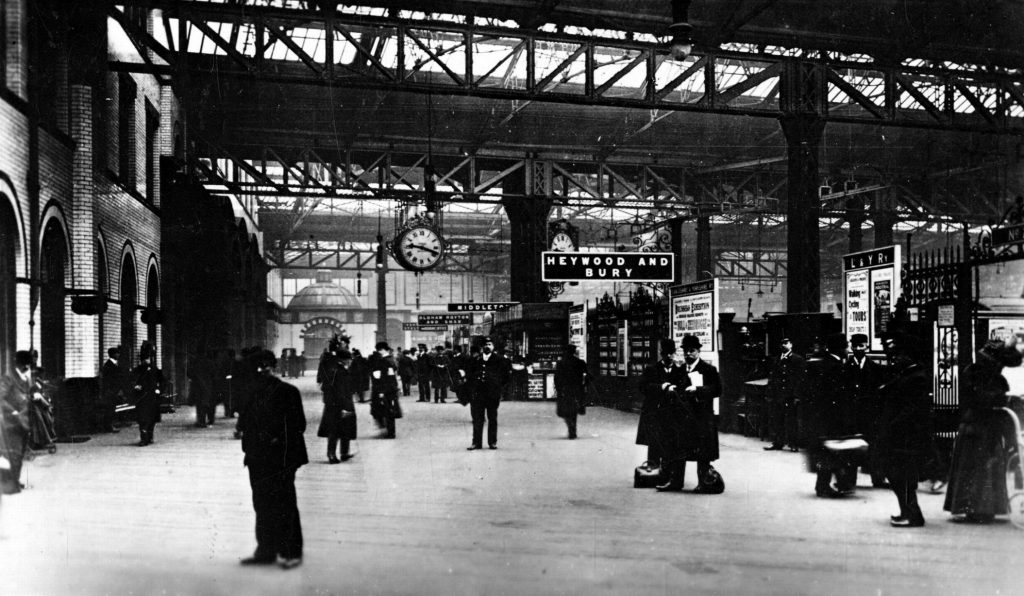
1910 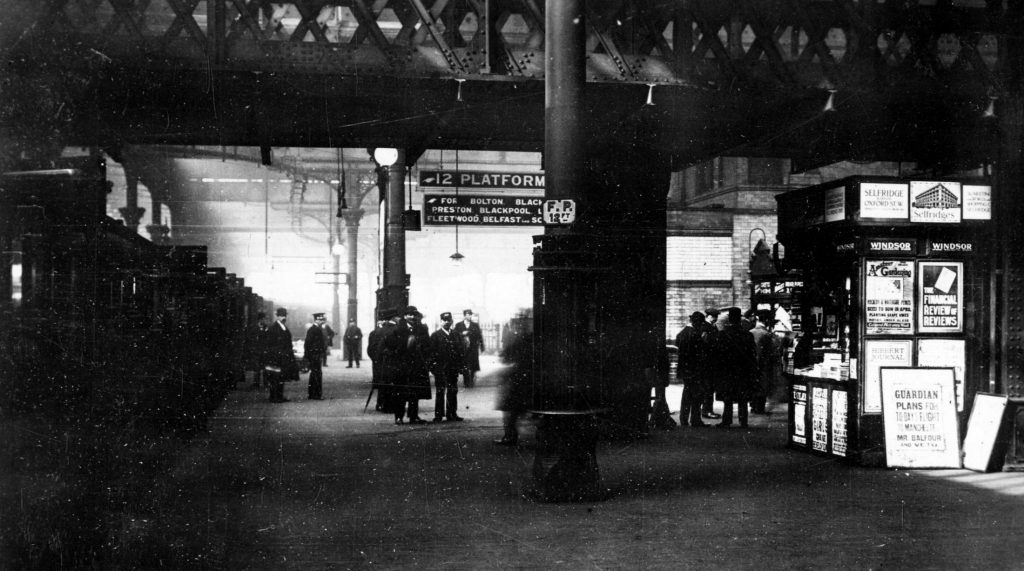
1924
Another important witness was that of William Gordon, caretaker of St. Michaels Flags recreation ground, Angel Meadow. He told the court that he had recognised the prisoners. He first saw them around the end of May sitting together on one of the benches. It was also mid-day and they were deep in conversation. He would say that he saw them make regular visits and would usually stay for around an hour, sometimes much longer. They always arrived together and left by the Ashley-lane gate.
He would bring this to the attention of his friend, James Bartholomew, verger of St. Michaels Church and he too would recognize the pair.
12 year old, Alfred Shorrocks, the boy who first found the body would be called before the bench. Here he would give evidence as to the events of August 6th.
Many other witnesses were called – PC Baker, Thomas Pickles (manager working for Ashworth Read), Mary and James Law – landlords of the British Queen Hotel on Bacup Road, Todmorden, Ellen Jenkins, waitress at the Central Temperance Hotel also in Todmorden and finally, Sarah Ann Earnshaw, a resident of Bacup Road who said she had seen both Elizabeth and Ashworth pass by her house on the 7th August.
Judge Headlem, having heard enough for the day would remand the prisoners until Friday 20th October.
The third and final trial to take place at the Minshull Police Court would commence a week later.
Sidney Smelt, Deputy Coroner for the City would be called for. He would state on record that on August 7th he held an inquest on the body of a male child, name unknown.
He would mention the evidence of Dr. Young who acted for the divisional police surgeon, who published details of the appearance of the body. Smelt would also say that the jury came to the conclusion that death was caused by internal convulsions and returned a verdict of death from natural causes and this is something that would prove vital in the defence of both Read and Remington.
At the of summoning up, both prisoners would be formally charged for trial at the Manchester Assizes at the next possible date.
On the 23rd November, 1893 – the trial of both Ashworth Read and Elizabeth Remington would begin.
However, the trial wouldn’t take place at the Manchester Assizes, instead it would take place at the Liverpool Azzises and after having charges of both willfully murdering a male child and abetting the disposal of said child, both prisoners pleaded not guilty.
Again, the same witnesses as those we have already spoken about gave evidence.
However, and most importantly, Chief Detective Inspector Caminada would again take to the stand and this, along with the evidence given by Dr. Young, surgeon who performed the post mortem on the body, would prove to be the most influential for the defence team as well as the jury.
Caminada would go over the details on the day of both arrests of Read and Remington. He would read out the statement Elizabeth had made whilst being held at the Manchester Town Hall on the day of her arrest but Sir Edward Clarke, defending Read would say, “That is not evidence against my Client.”
Caminada would be asked, “Is it usual before prisoners make a statement to caution them?” to which he replied, “No, sir.”
Mr. H. G. Shee, defending Elizabeth asked Caminada, “You don’t make a practice then of telling them they are not obliged to make a statement, but that if they do so it may be given against them?”
Caminada replied, “I don’t know that I ever got a statement without cautioning them.”
But Shee would argue, saying, “I don’t observe anywhere in your depositions, Caminada, that you said you cautioned her? There is nowhere in your depositions any written statement that you cautioned her!”
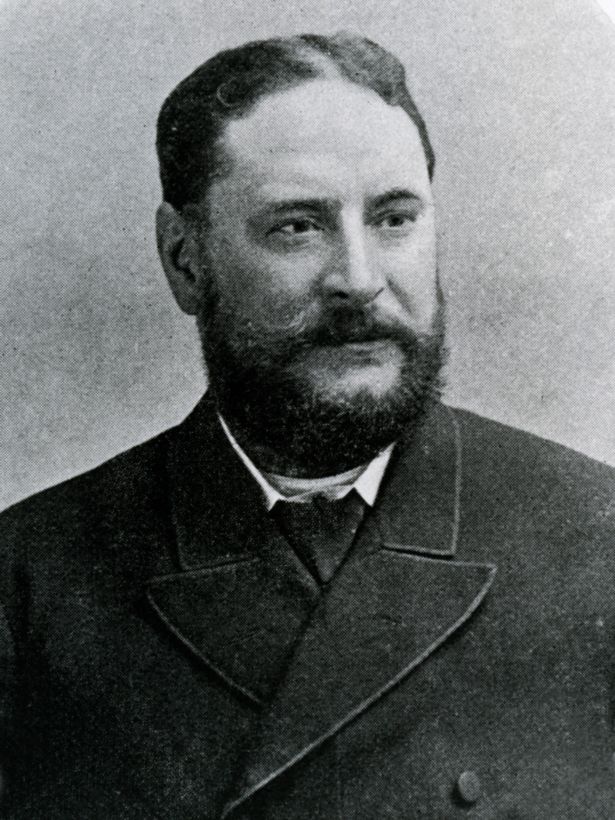
Jerome Caminada
In what turned out to be a feisty interrogation, Shee would push Caminada as hard as he could.
“You say in your depositions, “she gave me a ring. I showed this to Read and he said, “It’s safer, or better, for me to say nothing?”
“When you showed this ring to Read, you expected Read to make a statement, didn’t you?”
Caminada couldn’t answer as Shee interrupted him on than one occasion. Shee would keep going back to Elizabeth’s statement, each time twisting his words to hopefully catch Caminada off guard.
In summoning up, Shee would argue that Caminada had failed to follow police guidelines and that all of his evidence was, to put it simply – irrelevant.
“I submit there is internal evidence from the document itself that it is not possible such words could have been used by her.”
The Clerk of the Courtroom then read out Elizabeth’s statement of which Shee had dismissed as being as evidence. Upon finishing it, the Judge, facing the Jury would say, “This is not evidence in any degree as against the prisoner Read. You must not consider it in dealing with his case.”
Basically meaning all the evidence pointing to Read as being the person responsible for the death of a baby boy was now irrelevant.
Eventually, Sir Edward Clarke, defending, would say to the judge, “Do you think, my Lord, that there is evidence against Read to go before the Jury?”
The Judge turned again to the Jury, saying, “There is no evidence whatever upon which a jury could act.”
The jury, at the direction of the Judge would spend a little over a minute before making their decision.
Standing up, the Foreman of the Jury read out, “The Jury are unanimously of opinion that there is not sufficient evidence to find a verdict of guilty.”
Mr Shee would the face the judge. “With respect to my client (Elizabeth Remington), I submit that there is no evidence whatsoever that this child did not die naturally.”
But as Mr Shee was about to address the jury, the Foreman stood up and intimated that the jury had also decided to return a verdict of not guilty.
Both Read and Remington were formally discharged and left the dock a free man and a free woman but the sudden termination of the case was received with great surprise and bemusement.
Shocked crowds outside hooted and yelled as Read made his way out of court. At the Manchester Royal Exchange, more crowds had gathered as they caught glimpse of him making his way to a private office that had been cleared for him. Emotions where high as they jostled to get closer to him.
Later that evening, the crowds still hadn’t dispersed and when Read finally left the office to make his way into Barton Arcade which was situated across the street, they followed him, still shouting obscenities and spitting in his direction.
The next day, both Read and Remington made their way back to Burnley on the Thursday evening. Elizabeth looked pale and seemed anxious as well as becoming exhausted.
However, she spoke with one journalist on her way home, thanking those that stood behind her throughout her ordeal.
Interestingly, when asked if she ever thought that she would be discharged, she replied saying, “No. I expected we both should have been sentenced to a term of imprisonment.” It was also reported that she volunteered other statements regarding her own confession to Caminada but because of the verdict of not guilty being made, the press refused to publish these new confessions.
In the end, it seems that both Ashworth Read and Elizabeth Remington had gotten away with murder. Read being the one to kill their child with Remington being an accessory to the fact. Her own statement to Caminada which clearly outlined what happened on the day in question was ruled out as immiscible simply because there was no record of Caminada reading out the rights to Elizabeth prior to making her statement. All of the witnesses who came forwards to say they had seen both Read and Remington meeting up for several weeks before the baby’s body was found was ruled out as irrelevant as was the post mortem report that said that the baby looked to have died from asphyxia or convulsions and therefore “natural causes.”
I’m no lawyer and certainly not clued up on how postmortems work, but in this case, it really does seem that money and stature over the life of a defenseless baby boy came first.
What are your thoughts on this? Was the right verdict made? Did Caminada fail in his duties and should he have known better? Or did two people come up with a plan to get rid of a baby simply because it would bring shame on Ashworth Read, and ultimately get away with murder? I’d be interested to know..
Sources used in this story;
Illustrated Police News – Saturday 21 October 1893
Todmorden Advertiser and Hebden Bridge Newsletter – Friday 06 October 1893
Burnley Express – Saturday 30 September 1893
Burnley Express – Saturday 07 October 1893
Lancashire Evening Post – Friday 24 November 1893
+ many more courtesy of the British Newspaper Archive – www.britishnewspaperarchive.co.uk
Please follow me on social media;
Twitter – https://twitter.com/dohpods
Instagram – www.instagram.com/dohpods


Leave a Reply